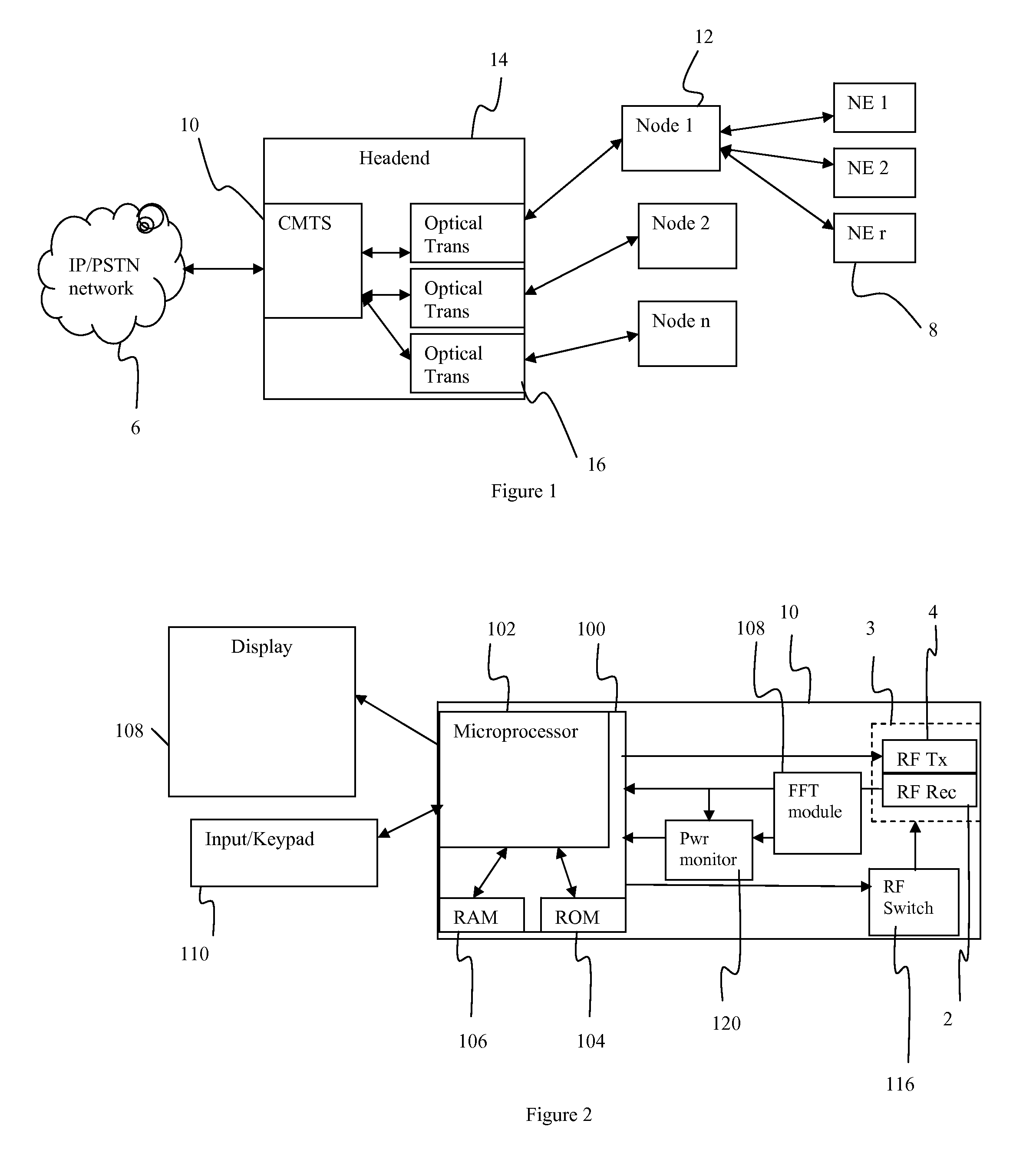Method and Apparatus for Determining the Dynamic Range of an Optical Link in an HFC Network
- Summary
- Abstract
- Description
- Claims
- Application Information
AI Technical Summary
Benefits of technology
Problems solved by technology
Method used
Image
Examples
Embodiment Construction
[0021]This disclosure provides for a dynamic range characterization of an optical link and the identification of available upstream frequency regions which would support communications. The methodology described in this invention instructs two DOCSIS terminal devices (cable modems or MTAs) to transmit simultaneously and measures the affects on a third frequency communication channel. Subsequently, power is increased for the two DOCSIS terminal devices until, nonlinear behavior at a known distortion frequency location is detected. That is, it monitors the affects of increasing power in the return-path of the cable network on a communications signal and logs the total power added when the power no longer changes in a predictable manner. The approach detailed in this disclosure requires that the two DOCSIS terminal devices reside on the same optical node. A methodology for isolating devices which reside on the same optical node is provided in a commonly assigned disclosure Attorney Doc...
PUM
 Login to View More
Login to View More Abstract
Description
Claims
Application Information
 Login to View More
Login to View More - R&D
- Intellectual Property
- Life Sciences
- Materials
- Tech Scout
- Unparalleled Data Quality
- Higher Quality Content
- 60% Fewer Hallucinations
Browse by: Latest US Patents, China's latest patents, Technical Efficacy Thesaurus, Application Domain, Technology Topic, Popular Technical Reports.
© 2025 PatSnap. All rights reserved.Legal|Privacy policy|Modern Slavery Act Transparency Statement|Sitemap|About US| Contact US: help@patsnap.com



